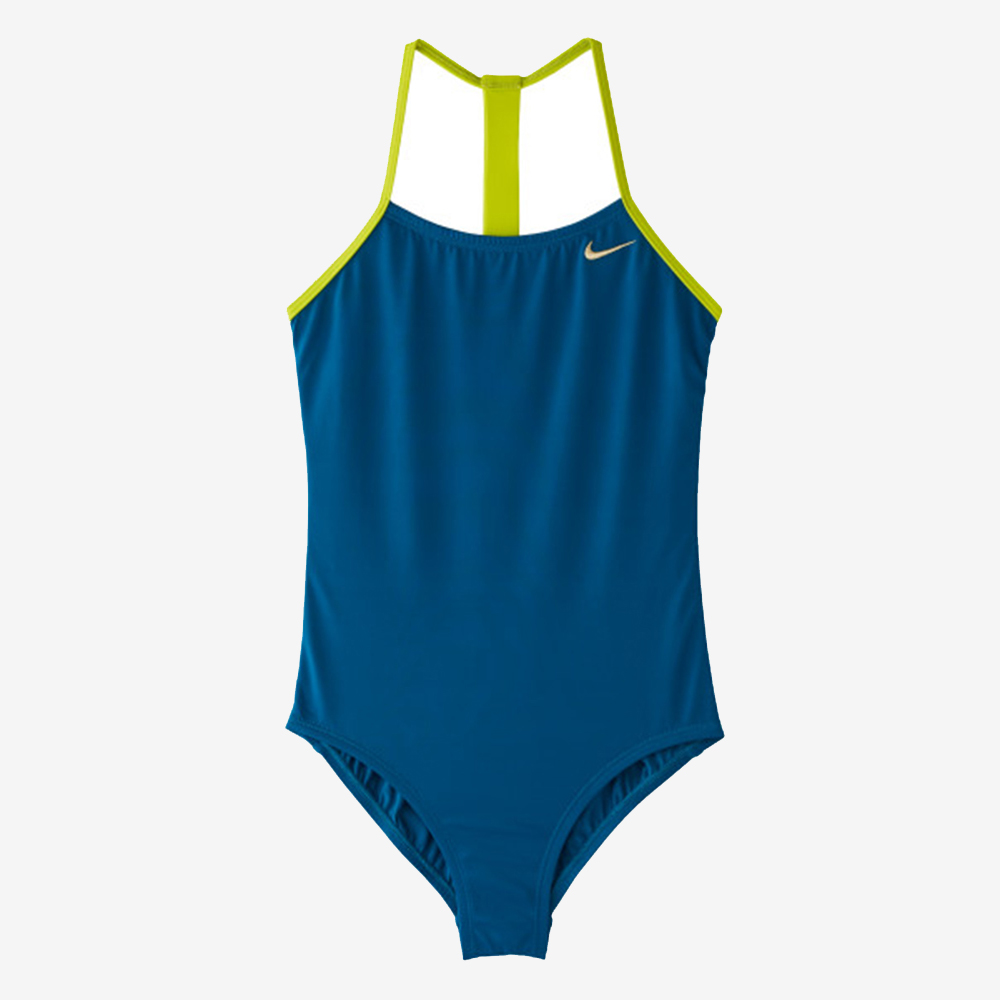Content Menu
● Understanding the Problem
● Method 1: Sewing Techniques
● Method 2: No-Sew Solutions
● Method 3: Shrinking Techniques
● Method 4: Styling Tricks
● Preventive Measures
● When to Replace Your Swimsuit
● Conclusion
● Frequently Asked Questions (FAQs)
Discover simple and effective ways to tighten up your saggy swimsuit bottoms and feel confident at the pool or beach.
Summer is here, and it's time to hit the beach or pool in your favorite swimwear. However, there's nothing more frustrating than putting on your beloved one-piece swimsuit only to find that the bottom has become saggy and unflattering. Don't worry! This comprehensive guide will walk you through various methods to fix saggy one-piece swimsuit bottoms, ensuring you look and feel confident in your swimwear all season long.

Understanding the Problem
Before we dive into the solutions, it's essential to understand why swimsuit bottoms become saggy in the first place. Several factors can contribute to this issue:
1. Wear and tear: Regular use and exposure to chlorine, saltwater, and sunlight can cause the fabric to stretch and lose its elasticity over time.
2. Improper care: Washing your swimsuit incorrectly or using harsh detergents can damage the fabric and elastic, leading to sagging.
3. Poor fit: Sometimes, the swimsuit may have been too big from the start, or your body shape may have changed since you purchased it.
4. Low-quality materials: Swimsuits made from inferior fabrics are more likely to lose their shape and become saggy quickly.
Now that we understand the causes, let's explore various methods to fix saggy one-piece swimsuit bottoms.

Method 1: Sewing Techniques
If you're handy with a needle and thread, these sewing techniques can help you restore the shape of your swimsuit bottom:
a) Adding Elastic to the Waistband
One of the most effective ways to fix a saggy swimsuit bottom is by adding or replacing the elastic in the waistband. Here's how:
◆ Turn your swimsuit inside out and locate the waistband.
◆ Using a seam ripper, carefully open a small section of the waistband.
◆ Measure the length of elastic needed by wrapping it snugly around your waist.
◆ Cut the elastic to size, leaving an extra inch for overlap.
◆ Attach a safety pin to one end of the elastic and thread it through the waistband.
◆ Once the elastic is in place, overlap the ends and sew them together securely.
◆ Close the opening in the waistband with a few stitches.
This method will create a snug fit around your waist, preventing the bottom from sagging.
b) Taking in the Sides
If your swimsuit bottom is too loose overall, you can take in the sides to create a more fitted look:
◆ Put on the swimsuit and pinch the excess fabric on each side.
◆ Mark the areas where you want to take in the fabric with pins or fabric chalk.
◆ Take off the swimsuit and turn it inside out.
◆ Sew a new seam along the marked lines, gradually tapering it to meet the original seam.
◆ Trim the excess fabric and finish the edges to prevent fraying.
c) Adding Ruching
Ruching is a technique that gathers fabric to create a flattering, textured effect. It can also help tighten loose areas of your swimsuit:
◆ Decide where you want to add ruching (usually along the sides or back).
◆ Cut a piece of elastic slightly shorter than the area you want to ruche.
◆ Pin the elastic to the inside of the swimsuit, stretching it slightly as you go.
◆ Using a zigzag stitch, sew the elastic in place, stretching it as you sew.
◆ When you release the fabric, it will gather and create a ruched effect.

Method 2: No-Sew Solutions
If sewing isn't your strong suit, don't worry! There are several no-sew methods you can try to fix your saggy swimsuit bottom:
a) Using Safety Pins
For a quick and temporary fix, safety pins can be your best friend:
◆ Put on your swimsuit and identify the areas that need tightening.
◆ Pinch the excess fabric and secure it with a safety pin on the inside of the swimsuit.
◆ Adjust the pins as needed to achieve the desired fit.
Remember to be careful when using safety pins, as they can potentially damage the fabric or come undone while swimming.
b) Fabric Glue Method
Fabric glue can be used to create a more permanent no-sew solution:
◆ Turn your swimsuit inside out and apply a thin line of fabric glue along the areas you want to tighten.
◆ Pinch the fabric together and hold it in place until the glue dries.
◆ Allow the glue to cure completely before wearing the swimsuit.
c) Drawstring Addition
Adding a drawstring to your swimsuit bottom can provide adjustable tightness:
◆ Cut a small slit in the waistband of your swimsuit.
◆ Thread a drawstring or cord through the waistband using a safety pin.
◆ Tie the ends of the drawstring to secure it in place.
This method allows you to adjust the fit as needed by tightening or loosening the drawstring.

Method 3: Shrinking Techniques
Sometimes, you can fix a saggy swimsuit bottom by strategically shrinking the fabric:
a) Hot Water Soak
◆ Fill a sink or basin with hot water (as hot as the fabric can tolerate without damage).
◆ Submerge the swimsuit bottom in the hot water for about 30 minutes.
◆ Remove the swimsuit and gently squeeze out excess water (do not wring).
◆ Lay the swimsuit flat to air dry.
The heat can help the fabric contract, potentially reducing sagging.
b) Dryer Method
If your swimsuit fabric allows for machine drying:
◆ Wash your swimsuit as usual.
◆ Place it in the dryer on medium heat for about 10-15 minutes.
◆ Check the fit, and repeat if necessary.
Be cautious with this method, as excessive heat can damage some swimsuit materials.
Method 4: Styling Tricks
Sometimes, the solution to a saggy swimsuit bottom lies in how you wear it:
a) High-Waisted Cover-Ups
Pair your one-piece swimsuit with a high-waisted skirt or shorts to conceal any sagging in the bottom area.
b) Strategic Accessorizing
Use a wide belt or sash around your waist to cinch in loose fabric and create a more defined silhouette.
c) Layering
Wear a pair of swim shorts or a swim skirt over your one-piece to provide extra coverage and support.

Preventive Measures
To keep your one-piece swimsuit bottoms from becoming saggy in the future, consider these preventive measures:
1. Proper Care: Always rinse your swimsuit in cold water after use, especially after exposure to chlorine or saltwater. Hand wash with a mild detergent and avoid wringing or twisting the fabric.
2. Alternate Swimsuits: If possible, rotate between different swimsuits to give each one time to regain its shape between wears.
3. Proper Storage: Store your swimsuits flat or hanging, avoiding folding them in ways that can stretch the fabric.
4. Quality Matters: Invest in high-quality swimwear made from durable, chlorine-resistant fabrics that are more likely to retain their shape over time.
5. Fit is Key: When purchasing a new swimsuit, ensure it fits snugly without being too tight. A proper fit from the start can prevent sagging issues down the line.
6. Sun Protection: Minimize direct sun exposure when not in the water, as UV rays can break down fabric fibers over time.
7. Avoid Rough Surfaces: Be mindful of sitting on rough surfaces like concrete pool edges or rocky beaches, which can cause excessive wear on the swimsuit bottom.
When to Replace Your Swimsuit
While these methods can extend the life of your swimsuit, it's important to recognize when it's time for a replacement. If your swimsuit shows signs of severe fabric degradation, loss of elasticity that can't be restored, or if the color has faded significantly, it may be time to invest in a new one.
Remember, a well-fitting swimsuit not only looks better but also provides proper support and comfort for water activities. Don't hesitate to replace your swimwear when necessary to ensure you always feel confident and comfortable at the beach or pool.

Conclusion
Saggy one-piece swimsuit bottoms can be a frustrating issue, but with the methods outlined in this guide, you have numerous options to restore your swimwear to its former glory. Whether you choose to sew, use no-sew techniques, try shrinking methods, or employ clever styling tricks, you can find a solution that works for you.
Remember that prevention is key, so proper care and maintenance of your swimwear can help avoid sagging issues in the future. With these tips and techniques, you'll be ready to hit the beach or pool with confidence, knowing your one-piece swimsuit fits perfectly and flatters your figure.
Don't let saggy swimsuit bottoms dampen your summer fun. Try these methods and enjoy your time in the sun and water, looking and feeling your best in your favorite swimwear!
Frequently Asked Questions (FAQs)
Q: Can I use a regular sewing machine to fix my swimsuit, or do I need a special one?
A: A regular sewing machine can work for most swimsuit repairs, but it's important to use a stretch stitch or a narrow zigzag stitch to allow for the fabric's elasticity. If you're working with very delicate or slippery swimwear fabrics, a serger (overlock machine) can be helpful but is not necessary for basic repairs.
Q: Is it safe to use fabric glue on swimwear?
A: Yes, it's safe to use fabric glue on swimwear, but make sure to choose a waterproof, flexible adhesive specifically designed for use on stretchy fabrics. Test the glue on a small, inconspicuous area first to ensure it doesn't damage or discolor the fabric.
Q: How often should I replace my one-piece swimsuit?
A: The lifespan of a swimsuit depends on factors like frequency of use, care, and quality. On average, a well-cared-for swimsuit should last 1-3 seasons of regular use. However, if you notice significant stretching, fading, or deterioration of the fabric, it's time to replace it, regardless of how long you've had it.
Q: Can I use these methods to fix bikini bottoms as well?
A: Yes, many of these techniques can be applied to bikini bottoms. However, because bikini bottoms are smaller and often have less fabric to work with, you may need to be more careful and precise when making adjustments.
Q: Are there any risks to shrinking my swimsuit in hot water or the dryer?
A: Yes, there are risks associated with shrinking techniques. Hot water and dryer heat can potentially damage the fabric, cause colors to fade, or affect the swimsuit's overall elasticity. Always check the care label first, and if you decide to try shrinking methods, do so cautiously and gradually to avoid irreversible damage.





































































